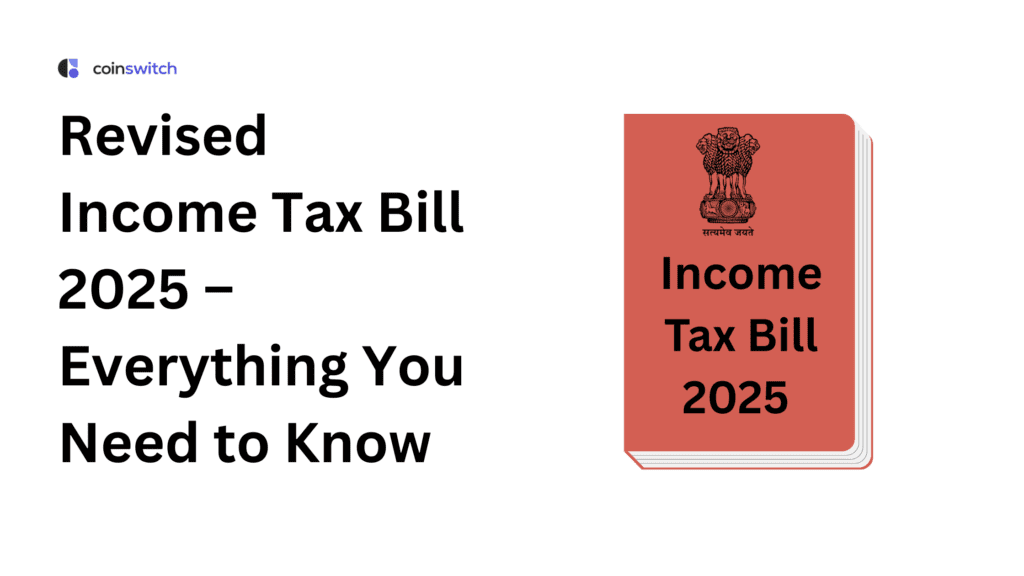On Aug. 11, 2025, the Lok Sabha passed the revised Income Tax Bill 2025. The bill will replace the Income Tax Act, 1961, after it clears the Rajya Sabha and receives the President’s nod. Earlier, the government formally withdrew the first version of the Income-Tax Bill, 2025, which was introduced in the Lok Sabha on Feb. 13, 2025, after the presentation of the Union Budget 2025-2026 by Finance Minister Nirmala Sitaraman.
The updated version of the I-T Bill incorporates most of the recommendations of the Lok Sabha Select Committee, while making some changes related to taxation of income from house property, tax refunds, and exemptions on anonymous donations made to charitable trusts. However, there is no change to income tax slabs and rates from what was mentioned in the earlier version of the I-T Bill. Also, the status quo is maintained vis-à-vis taxation of Virtual Digital Assets (VDAs).
The Revised New Income Tax Bill 2025 marks a significant step toward modernizing India’s taxation framework. With an emphasis on simplicity, transparency, and digital-first compliance, the bill addresses the evolving nature of income sources and enhances enforcement mechanisms.
What’s New in the Revised Income Tax Bill 2025?
The New Income Tax Bill 2025 provides clarity on two provisions related to income from house property. The first concerns the standard deduction of 30% from the annual value of a residential house property. The New Income Tax Bill 2025 clarifies that municipal taxes paid by the owner should be first reduced from the property’s annual value, and standard deduction should be applied to this net annual value.
The second provision relates to the availability of tax deduction of pre-construction interest for housing loan availed for constructing a house. The revised bill clarifies that the deduction is now available for let-out properties in addition to self-occupied ones, in alignment with the existing Act.
As recommended by the Select Committee, the revised bill removes the earlier provision that only returns (ITR) filed before the due date would be eligible for refunds. To be clear, now belated or revised returns also qualify for refunds. The committee also recommended that individuals with no tax liability be allowed to secure a NIL-TDS certificate in advance.
The New Income Tax Bill 2025 also restores the exemption for anonymous donations made to religious and charitable trusts. The earlier version of the I-T Bill, presented in February 2025, had removed this exemption.
Read More: How to Interpret AIS and TIS on the Income Tax Portal: An Overview
Income Tax Slabs, Rates Unchanged in New Income Tax Bill
To be sure, the Union Budget 2025-2026 provided major personal income tax cuts for middle-income earners.
Overall, the budget gave major relief to the Indian middle class by tweaking the tax slabs and rates for those who opt for the new tax regime. The result of these tweaks—zero income tax for annual income up to Rs. 12 lakh. The tax bonanza will lead to a savings of Rs. 80,000 for the middle class.
Individuals filing income tax returns under the new regime will have tax-free income up to Rs. 12 lakh and will save Rs. 80,000 on taxes, which is essentially their entire tax liability, helped by a standard deduction of Rs. 75,000.
| FY 2025-26 Income Tax Slab | Income Tax Rates |
| Up to Rs. 4 lakh | NIL |
| Rs. 4 lakh – Rs. 8 lakh | 5% |
| Rs. 8 lakh to Rs. 12 lakh | 10% |
| Rs. 12 lakh to Rs. 16 lakh | 15% |
| Rs. 16 lakh to Rs. 20 lakh | 20% |
| Rs. 20 lakh to Rs. 24 lakh | 25% |
| Above Rs. 24 lakh | 30% |
Note: No income tax up to Rs. 12 lakh does not mean that the top three slabs mentioned above do not exist. Put simply, thanks to the way tax slabs are designed after accounting for a Standard Deduction of Rs. 75,000, individuals with an income up to Rs. 12 lakh per annum will not have to pay any taxes for the financial year 2025-2026.
Read More: Income Tax Slabs and Rates: 2025–2026 Taxpayers Best Guide
Taxation of Digital Assets
The New Income Tax Bill 2025 has not suggested changes to the taxation of VDAs in India. As things stand today, crypto assets (VDAs) are unregulated in India. With the rapid growth of digital asset trading in India, the government aims to bring clarity and transparency to crypto taxation. The Union Budget 2022-23 introduced taxes on Virtual Digital Assets (VDAs). The subsequent budgets, including the most recent Union Budget 2025-2026, have continued the same taxation scheme for crypto assets. Clause 509 of the Income Tax Bill seeks to provide for the disclosure of information in respect of a transaction of a crypto-asset.
Crypto assets are taxable under Section 115BBH of the Income Tax Act.
Key Highlights of Section 115BBH:
- Flat Tax Rate: A 30% tax applies to any income generated from the transfer of virtual digital assets.
- No Deduction Allowed: Unlike other investment instruments, taxpayers cannot claim deductions for expenses incurred (except the cost of acquisition).
- TDS at 1%: A 1% Tax Deducted at Source (TDS) is levied on crypto transactions exceeding Rs. 50,000 (Rs. 10,000 in some cases) in a financial year under Section 194S.
- Loss Set-Off Not Allowed: Losses from VDA transactions cannot be adjusted against any other income.
- Gifting of Crypto Assets: If a person receives crypto or NFTs as a gift, they will be taxed under income from other sources. Some exceptions are allowed, like gifts from close family or under ₹50,000.
Impact on investors and traders
The new taxation policy has significantly altered the landscape for crypto users in India. Here’s the impact on different stakeholders at a glance.
1. Retail Investors
- Long-term investors who hold crypto as an asset now face a higher tax burden than holders of other financial instruments.
- No indexation benefits are available, making taxation rigid.
2. Traders & Frequent Buyers
- Day traders and those engaging in frequent transactions are hit hardest since losses cannot be set off.
- Profitability is reduced due to 30% taxation and 1% TDS deduction, impacting liquidity.
3. Crypto Startups & Exchanges
- Indian crypto exchanges have witnessed a decline in trading volumes due to the TDS provision.
- Some crypto investors have migrated to foreign exchanges or decentralized platforms.
Conclusion
The New Income Tax Bill 2025 is a balanced approach to simplifying taxes while ensuring compliance through technology. It provides relief to individuals, supports businesses, and modernizes India’s tax system to handle emerging income sources like digital assets. However, taxpayers must adapt quickly to maximize the benefits and avoid compliance pitfalls.
FAQs
1. What is new in the income tax bill in 2025?
The 2025 bill introduces a revised tax regime with higher tax exemption limits, simplified slabs, and updated deductions to ease the tax burden for middle-income taxpayers.
2. How does the new tax regime 2025 work?
It offers optional lower tax rates with fewer exemptions and deductions, encouraging taxpayers to opt for simpler filing with potentially lower taxes.
3. Is there any penalty for a revised income tax return?
No penalty if the revised return is filed within the deadline. Late revision may attract penalties or disallowances.
4. How is 12.75 lakh tax free?
Due to increased basic exemption limit plus applicable deductions and rebates, effectively income up to ₹12.75 lakh can be exempt from tax under the new regime.








